Lemon Tree Growth Stages You’ve Never Noticed
Published: 23 Mar 2025
Are you curious about how lemon trees grow? Let’s explore their fantastic journey! Lemon trees start as tiny seeds and go through fascinating stages, from sprouting to blossoming with fragrant flowers and producing bright, juicy lemons.
Each step is a wonderful part of nature’s process. This guide will walk you through the growth stages of lemon trees and give you the essential tips to grow your lemon tree in a pot successfully.
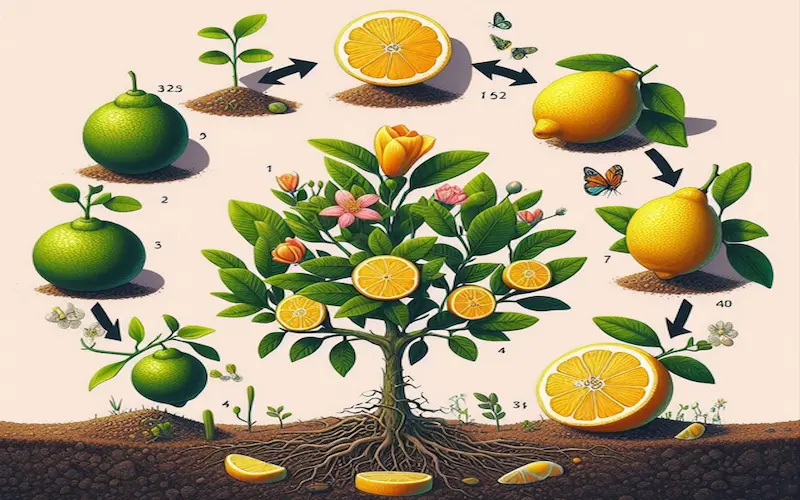
When is Citrus Season
Winter is citrus season. Lemons are at their peak in summer, but the season is called winter.
What Climate and Soil Do Lemon Trees Grow In?
Ideal Climate for Lemon Trees
- Temperature Requirements: Lemon requiresa Warm climate, sensitive to frost.
- Sunlight Needs: They require a minimum of 6-8 hours of direct sunlight daily.
- Humidity and Rainfall: They require moderate humidity and well-balanced rainfall.
Best Soil Conditions for Lemon Trees
- Soil Type and Texture: Lemon prefers well-draining sandy loam soil.
- pH Level of Soil: They prefer an acidic pH (5.5 – 6.5) soil for best growth.
- Nutrient Requirements: They require soil rich in nitrogen, phosphorus, and potassium.
- Drainage and Aeration: Essential to prevent root rot and support healthy growth.
How to Improve Soil for Lemon Trees
- Improving Drainage: Use sand, perlite, or raised beds.
- Enriching Soil with Nutrients: Add compost, organic fertilizers, and mulch.
- Adjusting Soil pH: Use lime to raise pH and sulfur to lower it.
4. Best Locations for Growing Lemon Trees
- Outdoor Planting: Ideal in warm, frost-free regions like India, Pakistan, and the Mediterranean.
- Indoor and Greenhouse Growing: Suitable for colder climates with controlled environments.
Final Thoughts
The right climate and soil conditions ensure a healthy lemon tree with abundant fruit production.
Choosing the Right Variety to Grow
Popular Lemon Varieties for Different Climates
- Eureka Lemon: Best for warm climates, produces fruit year-round.
- Lisbon Lemon: Cold-hardy and highly productive.
- Meyer Lemon: Sweeter taste, ideal for home gardens.
- Ponderosa Lemon: Large fruit with thick skin, great for warmer regions.
Best Lemon Varieties for India and Pakistan
- Kaghzi Lemon: Thin-skinned and juicy, thrives in Punjab and Sindh.
- Baramasi Lemon: Produces fruit throughout the year, suitable for warm climates.
- Rough Lemon: Used as rootstock, drought-tolerant, and hardy.
Best Lemon Varieties for the USA
- Improved Meyer Lemon: A hybrid, disease-resistant, and cold-tolerant.
- Ponderosa Lemon: Large fruit for warm regions like California and Florida.
- Bearss Lemon (Sicilian Lemon): Tart and juicy, popular commercially.
- Pink Variegated Lemon: Unique pink flesh, ornamental and edible.
Factors to Consider When Selecting a Variety
- Climate Compatibility: Choose a variety suited to your region’s temperature and weather conditions.
- Space Requirements: Dwarf varieties are best for small spaces or container gardening.
- Fruit Yield and Taste: Consider whether you prefer tart, juicy lemons or sweeter, milder ones.
Growing from Seeds vs. Grafted Plants
- Seed-Grown Trees: Take longer to fruit, unpredictable results.
- Grafted Trees: Faster fruiting, reliable quality, and better disease resistance.
Final Thoughts
Selecting the right lemon variety based on your climate, space, and taste preference ensures a successful harvest with healthy, productive trees.
Germination
The journey of a lemon tree begins with germination, where a tiny seed transforms into a growing plant. I planted the seed in moist soil, ensuring it was warm and light. After about 1 to 2 weeks, I noticed the seed starting to sprout.
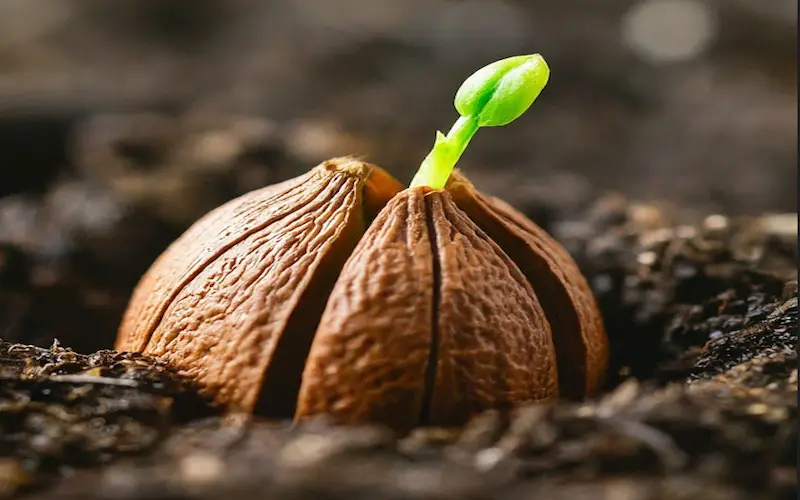
First, a tiny root, called a radicle, poked out, followed by a small shoot reaching upward. The first leaves, known as cotyledons, unfolded as the days passed. These early moments were critical because they laid the groundwork for my lemon tree to grow strong and healthy.
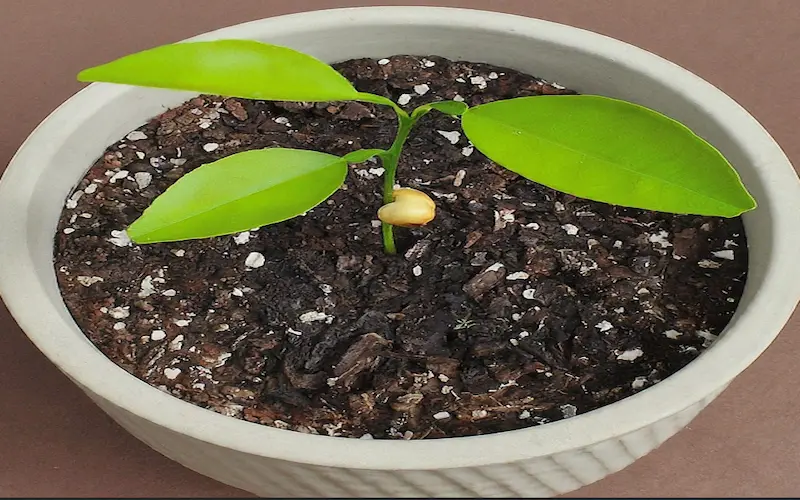

Seedling to Sapling: The Early Phase of Lemon Plant Growth Stages
When I think about the citrus plant lifecycle, the transition from seedling to sapling is one of the most exciting stages. After the tiny seed germinates, it sprouts into a delicate seedling, just the beginning of its growth. As the seedling matures, it slowly strengthens, growing taller and sturdier.
The seedling-to-sapling phase is crucial because the young plant is developing its roots and foliage. I ensure it receives the right amount of sunlight, water, and nutrients during this time. It’s impressive to watch as the seedling transforms into a more established sapling with thicker stems and more leaves.
This stage is about careful nurturing as the sapling prepares for the next step in its journey to becoming a full-grown lemon tree.
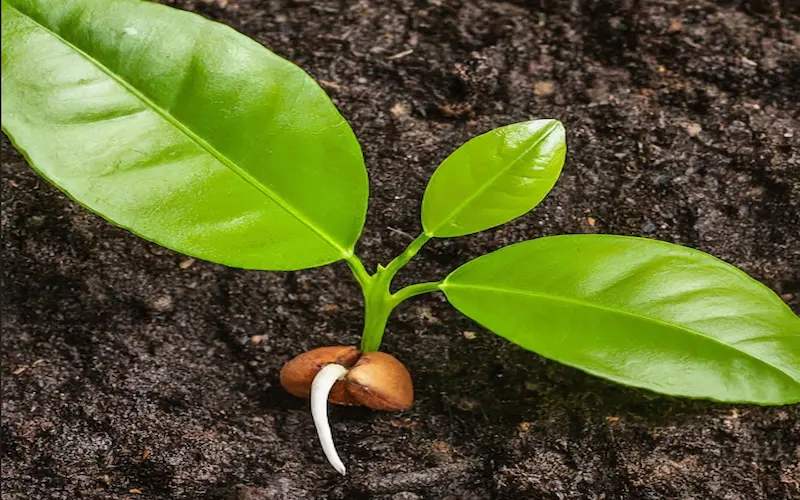
Lemon Tree Flowering Stages
The flowering stage of a lemon tree is one of the most exciting parts of its growth. After all the time spent caring for the tree, it’s an absolute joy to see it start producing buds. These buds will soon open into beautiful, sweet-smelling flowers, signaling that lemons are on the way.
At this stage, I ensure the tree gets plenty of sunlight, which helps it produce more flowers. I also water it regularly but carefully, as too much water can cause the flowers to fall off. A good, balanced fertilizer gives the tree the nutrients it needs to bloom.
Seeing the lemon tree in full bloom is incredibly satisfying. The lovely scent of the flowers fills the air, and it’s hard not to feel proud of how far the tree has come. This is a crucial stage because these flowers will soon become the lemons I’ve eagerly awaited, marking another significant step in the tree’s journey.
Watch for small, delicate flowers appearing on your lemon plant. These are the early signs that your plant is gearing up for the next step.

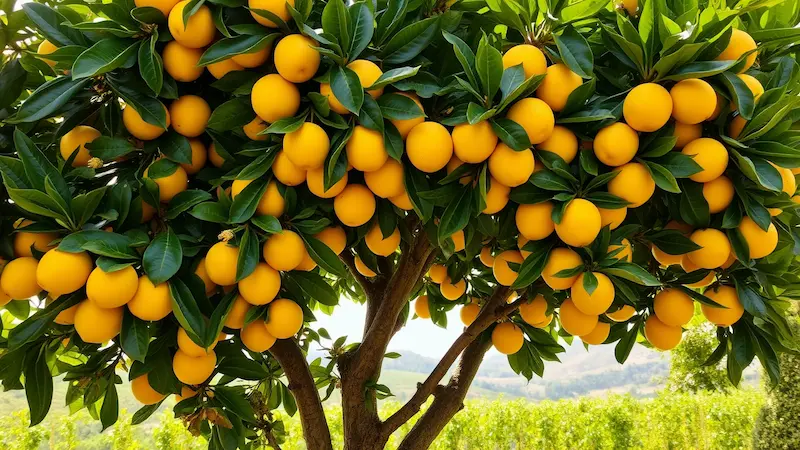
Lemon Tree Fruit Formation: From Green Buds to Ripe Yellow Lemons
The most rewarding stage of Growing a lemon tree is fruit formation. Watching tiny green buds transform into vibrant yellow lemons is a fascinating process. However, this stage requires proper care, including correct watering, feeding, and pest control. This guide will explore how lemons develop, the common challenges you might face, and how to ensure a healthy and abundant harvest.
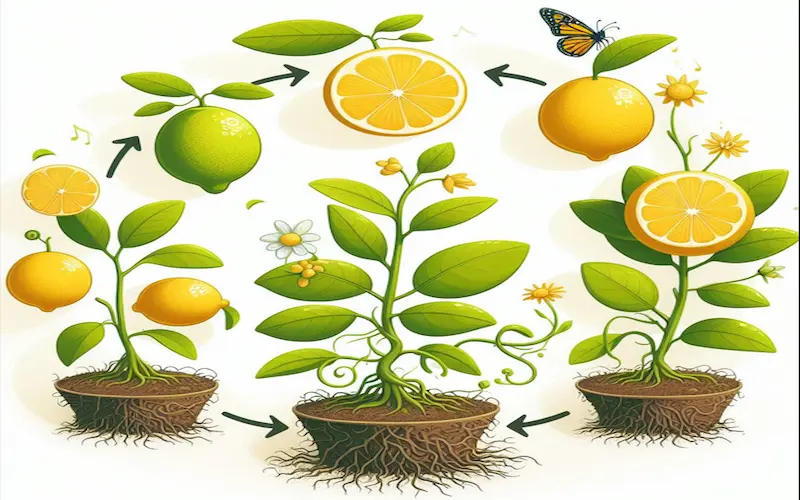
The Transformation Process: From Buds to Lemons
The journey from flower to fruit starts with pollination. Bees and other pollinators play a crucial role in fertilizing the lemon blossoms. Once pollinated, tiny green buds begin forming at the flowers’ base.
Stages of Lemon Growth:
- Flowering Stage: The tree produces fragrant white flowers. These blossoms are the starting point for lemon fruit.
- Fruit Set: After pollination, tiny green buds appear, gradually increasing.
- Green Lemon Growth: The fruit continues to grow, remaining green for weeks or months, depending on the variety.
- Color Change: As lemons mature, they transition from green to a bright yellow, signaling they are ready for harvest.
💡 Tip: If your lemons stay green for too long, ensure your tree gets plenty of direct sunlight and receives the proper nutrients
Common Issues and Troubleshooting:
Some issues may arise as your lemon tree moves through the fruiting stage. Here’s how to identify and fix them:
Lemons Not Turning Yellow
If your lemons remain green or take too long to ripen, consider the following:
- Sunlight Deficiency: Ensure your tree gets at least 6–8 hours of direct sunlight daily.
- Nutrient Imbalance: A lack of potassium can delay ripening. Use a fertilizer rich in potassium to encourage color change.
- Temperature Conditions: Cooler temperatures can slow down ripening. If growing in a pot, move the tree to a warmer location.
Premature Fruit Drop
Sometimes, young lemons fall off the tree before they fully mature. This can be caused by:
- Overwatering or Underwatering: Maintain a consistent watering schedule, moistening the soil.
- Lack of Pollination: If too few flowers develop into fruit, hand-pollinate the blossoms using a small brush.
Pest and Disease Problems
Common pests such as aphids, scale insects, and mites can weaken the tree and affect fruit development.
- Solution: Use neem oil or insecticidal soap to keep pests away.
Fungal Issues: If you notice mold or spots on fruit, improve air circulation around the tree and avoid overhead watering.
Watering and Feeding Guidelines:
Proper watering and fertilization are key to producing healthy, juicy lemons.
Watering:
- Water sincerely 2-3 times a week, depending on climate conditions.
- Keep the soil moist, but avoid waterlogging, which can lead to root rot.
- Reduce watering during colder months when growth slows down.
Fertilization:
A lemon tree needs a balanced fertilizer to support fruit growth.
- Use a citrus-specific fertilizer rich in nitrogen, phosphorus, and potassium.
- Apply fertilizer every 4-6 weeks during the growing season.
- Add organic compost to improve soil health.
💡 Pro Tip: Your tree may need more nitrogen if the leaves turn yellow. Feed it with a nitrogen-rich fertilizer to restore green, healthy leaves.
4. Harvesting Your Lemons
Once your lemons turn a bright yellow, they are ready to be harvested. Here’s how to know when they are at their best:
- Color & Firmness: Ripe lemons are entirely yellow and slightly firm to the touch.
- Taste Test: If unsure, pick one lemon and taste it. If it’s juicy and tangy, the rest are ready to harvest.
- Harvesting Method:
- Twist the lemons gently off the branch.
- Use pruning shears to avoid damaging the tree.
- Twist the lemons gently off the branch.
Storing Your Lemons
- Fresh lemons can last several weeks at room temperature.
- Store them in the refrigerator for up to 2 months.
Freeze lemon juice or zest for long-term use.
Final Thoughts
The fruit formation stage is one of the most rewarding phases of growing a lemon tree. You’ll ensure a successful harvest of bright, juicy lemons by providing the right balance of sunlight, water, and nutrients. Monitor for common issues and address them promptly to maintain a healthy tree. Before you know it, you’ll enjoy your labor’s delicious fruits
Disease and Pest Management During Lemon Plant Growth Stages
Lemon trees grow in clear stages. At each stage, they face different challenges from diseases and pests. Managing these issues is key to a healthy tree and fruit yield. Below, we explain how to protect your lemon tree as it grows.
Why Disease and Pest Management Matters
- Healthy Growth: Stopping diseases and pests helps your tree grow strong.
- Better Fruit: Healthy trees produce more and better lemons.
- Easy Maintenance: Fewer problems mean less work for you.
Early Growth Stages
When a lemon tree is young, it is more sensitive. Small infections or pests can slow growth.
Common Problems:
- Fungal Infections: Young leaves may show spots or mildew.
- Aphids and Scale Insects: These pests may attack tender new growth.
Action Steps:
- Monitor Regularly: Check your tree often. Look for spots, discolored leaves, or insects.
- Use Mild Treatments: Use organic sprays like neem oil. Spray on leaves to stop fungus and pests.
- Remove Affected Parts: If you see sick leaves, remove them to stop spread.
Mature Growth Stages
As the lemon tree grows, its bark thickens and becomes more robust. However, it can still get problems.
Common Problems:
- Bacterial Canker: This disease causes dark spots on leaves and fruit.
- Citrus Mites: Tiny pests that can damage the fruit and leaves.
- Root Rot: Poor soil drainage can lead to fungal problems at the roots.
Action Steps:
- Prune Regularly: Trim dead branches and leaves. This improves airflow.
- Improve Soil Drainage: Add organic mulch to keep the soil loose. Make sure the water drains well.
- Apply Targeted Treatments: Use copper-based sprays for bacterial canker. Use miticides for citrus mites.
- Inspect Fruit: Check lemons for spots or deformities. Early action prevents bigger problems.
Harvesting Process of Lemon Tree Fruit Stages
The moment you’ve been waiting for is here—harvesting your homegrown lemons! Let’s keep it simple as we guide you through picking your ripe, juicy fruits.
Determining the Right Time to Harvest:
Wait until your lemons are entirely yellow before picking. Give them a gentle squeeze; they are ready if they yield slightly to pressure. Avoid pulling or tugging; a simple twist usually detaches the fruit quickly.

Gentle Harvesting Techniques:
Handle your lemons with care. Cut the stem about half an inch above the fruit using clean, sharp scissors or pruning shears. This helps your plant focus its energy on new growth.
Celebrating Your First Lemon:
Take a moment to revel in your success! Whether you use your lemon for cooking, baking, or a refreshing drink, savor the flavor of your homegrown produce. Share the joy with friends and family—your gardening journey has come full circle.
Harvesting your lemons is a gratifying experience. Pay attention to the signs, use gentle harvesting techniques, and celebrate the sweet success of your first homegrown lemon. Please keep it simple, and enjoy the fruits of your labor!
Lemon Tree Growth Chart
A lemon tree growth chart is essential for anyone interested in cultivating and maintaining lemon trees. This chart provides a detailed timeline of the various growth stages in a lemon tree’s life cycle, from its initial planting as a seed to its full maturity, which typically takes three to six years.
| Stage | Age | Growth Description |
| Seed Germination | 2 weeks to 2 months | Seeds begin to sprout, forming tiny roots and shoots. |
| Seedling | 2 to 4 months | Small plants start developing their first set of leaves. |
| Young Tree | 1 to 3 years | Small plants start developing their first set of leaves. |
| Mature Tree | 3 to 5 years | The tree reaches its full height (usually 8-12 feet) and starts flowering. |
| Flowering & Fruiting | 1 to 2 years after maturity | Flowers bloom and begin to bear fruit, usually after 3-5 years from planting. |
| Full Fruit Production | 4 to 6 years | The tree matures fully and continues producing abundant fruit annually. |
| Peak Production | 7+ years | Tree matures fully and continues producing abundant fruit annually. |
Lemon Tree Growth Cycle
The first stage of the lemon tree growth cycle is germination, which occurs after the seed is planted and typically takes two weeks to a month. This is followed by the seedling stage, where the tree develops its first leaves and roots. This stage can last anywhere from six months to a year, depending on the variety of lemon trees and the growing conditions.
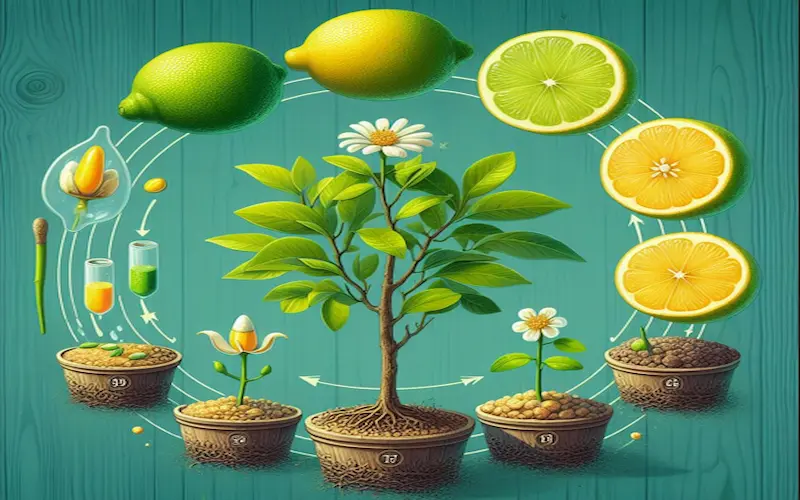
The next stage is the sapling stage. The tree grows taller during this phase and develops its trunk and branches. This stage can last for one to three years. After this, the tree enters the juvenile stage, where it continues to grow but does not yet produce fruit. This stage can last for two to three years.
The final stage is the mature stage, where the tree begins to produce fruit. This typically occurs when the tree is between three to six years old. During this time, the grower must provide adequate watering, fertilization, and pest control to ensure a healthy crop.
In conclusion, a lemon tree growth chart is a valuable resource for anyone looking to grow these citrus trees. It offers a detailed timeline of the different growth stages in a lemon tree’s life cycle and provides essential information on caring for the tree at each stage.
Related Faqs about the Life Cycle of a Lemon Tree
Lemon trees take 2 to 3 years to produce fruit from a grafted plant and 5 to 6 years to produce fruit from seedling to harvest.
Usually 9 months a lemon tree takes to grow from pollination to harvesting
Lemon trees typically flower during the spring and early summer months. The exact timing can vary based on climate, location, and the specific lemon tree variety. You can expect lemon trees to bloom from late winter to early summer.
After flowering, lemons generally take 6 to 9 months to develop and ripen entirely on the tree. However, the exact time can vary depending on the lemon tree variety, climate, and growing conditions. Patience is essential as you wait for the lemons to mature before harvesting.
The appearance of a lemon tree can vary based on factors such as age, variety, and growing conditions, but here are some common characteristics:
- Leaves: Lemon trees are typically glossy, elliptical, and medium to dark green. When crushed, they have a distinct lemon scent.
- Height and Shape: Lemon trees can range in height but are generally small to medium-sized. They have a rounded or slightly oval shape with dense foliage.
- Trunk and Bark: The trunk of a lemon tree is often smooth and grayish-brown. As the tree matures, the bark may develop furrows.
- Flowers: Lemon trees produce fragrant white flowers with five petals. The flowers are usually solitary or in small clusters.
- Fruit: Lemon trees bear yellow, oval-shaped fruits. The size and shape of the fruit can vary between lemon varieties.
Overall, lemon trees are attractive and vibrant, with glossy green leaves, fragrant flowers, and bright yellow fruits that make them easily recognizable.
Lemon trees pair beautifully with herbs like rosemary and lavender. For a pop of color and nutrition, try adding plants from our https://mybestvegetables.com/blue-vegetables-list/. Such as blue cabbage or kale. They thrive in similar soil conditions
Conclusion
Wrapping up your lemon-growing adventure is all about simplicity and patience. From planting tiny seeds to picking ripe lemons, each step of the growth stages of a lemon tree plays a vital role in the journey. Celebrate the small wins, like spotting the first sprouts or harvesting your first lemon. Vegetable gardening is a journey, not a race. Please keep it simple, enjoy the process, and relish the satisfaction of growing your lemons. Whether you’re a beginner or a seasoned green thumb, your efforts in nurturing nature will indeed bear fruit.

- Be Respectful
- Stay Relevant
- Stay Positive
- True Feedback
- Encourage Discussion
- Avoid Spamming
- No Fake News
- Don't Copy-Paste
- No Personal Attacks



- Be Respectful
- Stay Relevant
- Stay Positive
- True Feedback
- Encourage Discussion
- Avoid Spamming
- No Fake News
- Don't Copy-Paste
- No Personal Attacks





